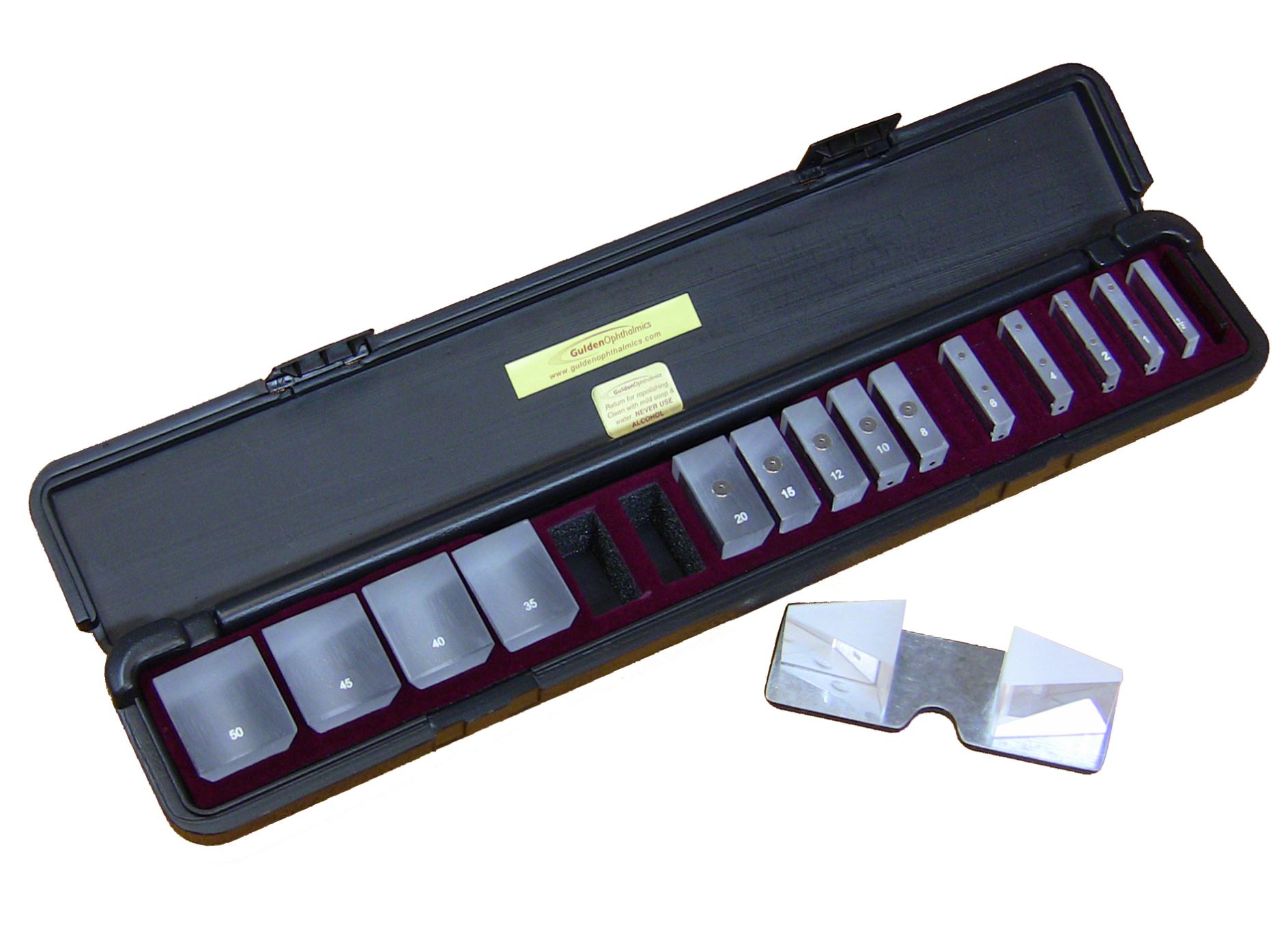In strabismus, one eye looks directly at the object being viewed while the other eye is misaligned inward (esotropia), outward (exotropia), upward (hypertropia) or downward (hypotropia). Accurately measuring the degree of strabismus using prisms is critically important when preparing for strabismus correction. Less than ideal results in strabismus surgery may be due in part to errors in the measurement of strabismic deviations.
Large deviations are best measured by dividing the prism power between the two eyes, holding each of the two prisms in the frontal (coronal) plane. But holding two prisms in front of the eyes requires two hands or considerable dexterity – and still errors can result. With the Bishop tool, two base-in or base-out prisms are held in place using magnetic fixation to a metal plate with a ferrous surface. The tool with the two prisms can be positioned using one hand, freeing the other hand for note taking and/or cross eye cover testing. The prisms can be placed base in, base out, spaced for the patient’s PD, and are held correctly in the horizontal and frontal planes by magnetic fixation to the plate.
The Bishop tool, developed by Dr. John E. Bishop, MD, of Texas, fixes the prisms in place, helping to eliminate measurement errors. The Bishop tool allows simultaneous placement of prisms in front of each eye with proper positioning. The system is designed to also work well on patients wearing trial frames. A portion of each sale of the Bishop tool is donated to the Children’s Eye Foundation.

